Books
A New Book Explores How Decades of Activism Resulted in the Power Shifts Upending Today’s Art World—Read an Excerpt Here
"Takedown: Art and Power in the Digital Age" is out now.
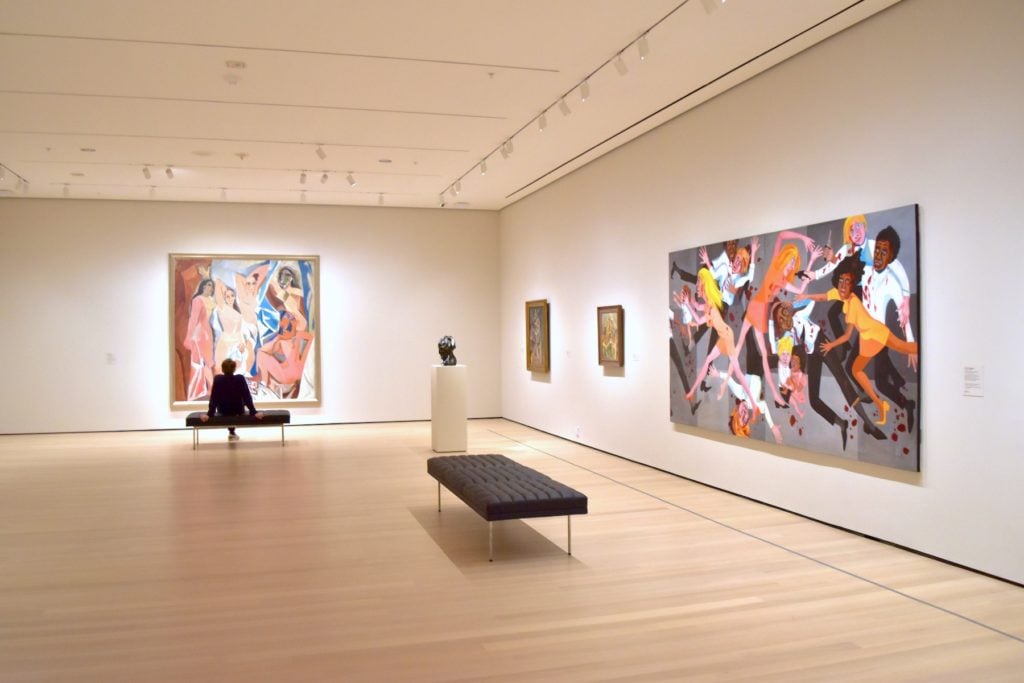
"Takedown: Art and Power in the Digital Age" is out now.

Farah Nayeri

The social upheavals of the last decade—as epitomized by the #MeToo and Black Lives Matter movements—have been unquestionable catalysts of change in the art world. They have accelerated a process that was otherwise proceeding at a sluggish and erratic pace: inclusivity.
Today, museums, galleries, curators, and patrons all want to be seen as agents of that inclusivity. Their efforts may look, in some cases, like window dressing, hasty and superficial. Yet there’s no going back to the way it was before. As MoMA’s chief curator of painting and sculpture Ann Temkin points out, “the genie is out of the bottle.”
It would be reductive to attribute these shifts solely to the mutinies triggered by the crimes of Harvey Weinstein and the murder of George Floyd. The art world has unquestionably been undergoing a dramatic and radical transformation for a few decades now. International biennials have multiplied, and new art centers have flourished on all continents. There’s a sense that interesting art is being made all over the world. New fields of academic research—feminist studies, African American studies, colonial critique—have opened the minds and broadened the horizons of younger curators. Social media has been a major enabler of this cultural mini revolution. As the curator Daniel Birnbaum pointed out, it is “an accelerator and an amplifier of immense power.”
Consequently, the art world today, while still a work in progress, is a better, richer, and more interesting place than it was before. True, some of the changes are motivated by cynicism, damage control, and fear of bad publicity. Nonetheless, arts programming has become less staid, repetitive, and blockbuster-led. Audiences are faced with a wider and more relevant range of options, and are visiting museums and arts institutions in ever greater numbers. Not only have museums not lost audiences in the process: they have gained new ones.
There are those who are suspicious of this new age of inclusivity, who write it off as a burst of political correctness, and view the beneficiaries as second-rate talents brought in to fill diversity quotas. Yet in the vast majority of cases, the artists emerging from oblivion and getting solo museum shows should have done so a long time ago. They have been unfairly underestimated for far too long.
Take women artists, for example. Forever brushed off as not good enough, they’re finally stepping into the global spotlight and being recognized, not for their gender, but for their talent. After generations of being labeled only as wives, lovers, muses, mothers, sisters, daughters, and objects of desire, they are finally getting credit where it is due. Thanks to solo exhibitions, they are marching, one by one, through the guarded gates of major museums—even as they remain absent from the art-history textbooks.
The same goes for nonwhite artists. More and more of them are getting solo shows and exhibiting works so powerful, you wonder why they weren’t shown before. As Holland Cotter wrote in the New York Times in February 2021, Black art is “some of the most conceptually exciting and urgent-minded American art, period—a reality only quite recently acknowledged by the art world at large.”
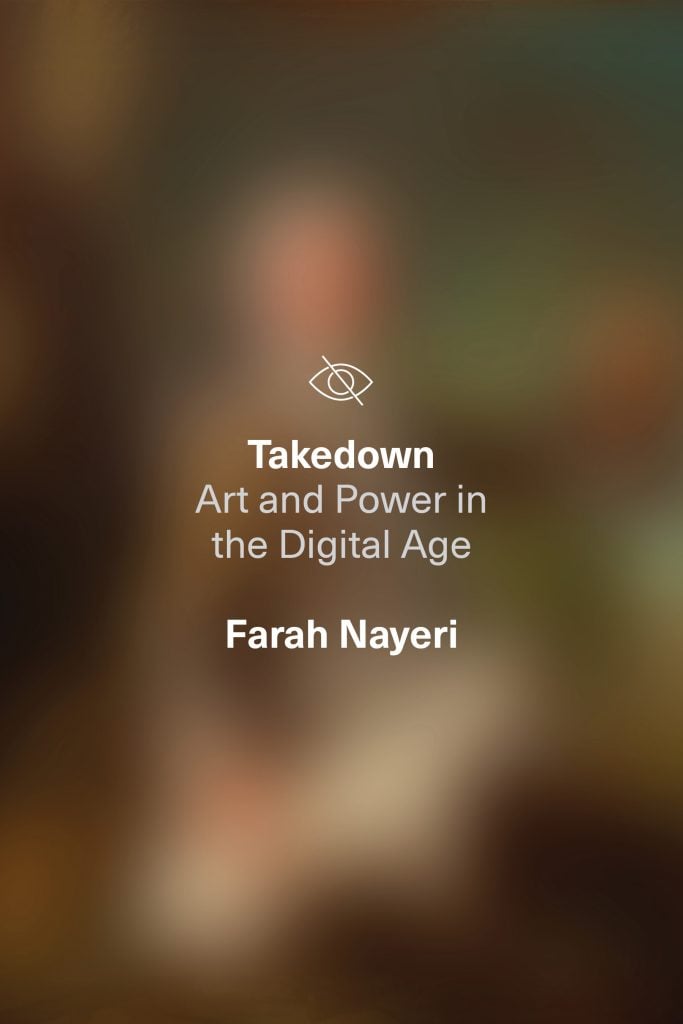
Farah Nayeri, Takedown (2022).
Admittedly, there have been other moments in recent history when Black artists received particular attention. And those moments came and went without causing lasting change. What makes this particular moment different is that the artists in question are entering museum collections, getting important solo shows, and being reviewed by prominent critics. That, notes the artist Adam Pendleton, makes them “harder to ignore” down the line: “They become a part of the conversation that is concerned with history and not with the market.”
What digital communications have done in the meantime is hold museums, arts institutions, and the people running them to account. These institutions exist for the good of society. They are the custodians of priceless collections, and (in Europe at least) recipients of tax money. It stands to reason that they should face greater scrutiny. And they do.
Thanks to heightened media and activist attention, the public today is much more mindful of who the sponsors and managers of major museums are, where the money comes from, and what else it is invested in. And there are increasing demands on the part of that public for that money to be ethically and morally clean.
This is an altogether recent phenomenon. Until the global financial crisis of 2008, museum managers accepted fat checks from billionaires and other members of the global one percent without asking questions about the source of the wealth, even when there was more than a whiff of scandal around it (arms deals, opioids. . .) In those heady days of lavish museum expansions led by star architects, all help was gratefully received. Sometimes, the name of the biggest benefactor ended up emblazoned on the building.
As we now emerge from a deadly and protracted pandemic and look ahead to years of austerity, the era of no-questions-asked extravagance is gone. What we can expect is concern for three things: equality, ethics, and ecology. Museums are going to have a much tougher time taking donations from billionaires whose fortunes were made improperly. If they accept patronage from a louche benefactor, they will risk being named and shamed in the court of digital opinion.
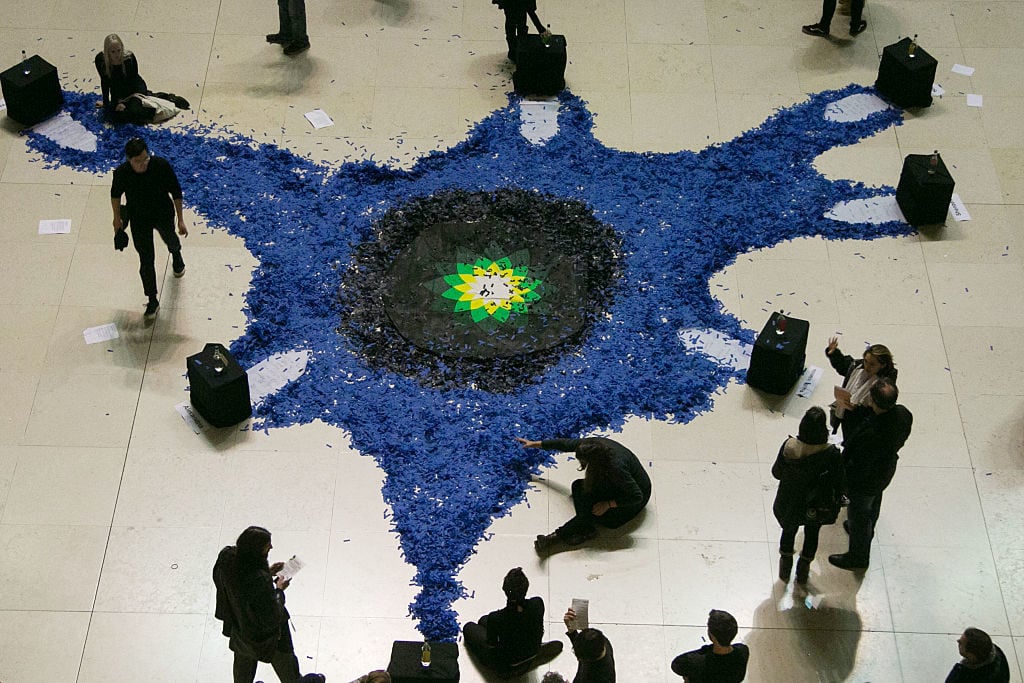
The artist-activist group BP or Not BP stage a ceremonial performance at the British Museum in 2016. Photo by Kristian Buus/In Pictures via Getty Images Images.
We are, in short, witnessing “the beginning of a process of realignment into a more just and equal world,” says Jess Worth, co-founder of the BP or not BP? environmental protest group, which regularly stages protests against BP’s sponsorship of U.K. cultural institutions. There are “imbalances of power and privilege” running all the way through the arts, and they need to be addressed.
“What that process looks like in practice,” she concludes, “is obviously really messy and complicated.”
Sometimes too messy. The art world has swung from one extreme to another, and is still far from reaching equilibrium. And new imbalances are being created in the process.
To start with, as Wesley Morris wrote in the New York Times in 2018, “We’re talking less about whether a work is good art, but simply whether it’s good—good for us, good for the culture, good for the world.” In this do gooding art world, where morality determines “which artists can make what art” and “who can speak,” we may sometimes end up headlining artists who don’t merit the attention. A certain tokenism may enter into play as dealers, auctioneers, and collectors strive to be demonstrably more diverse and grab whoever they can get from the newly favored category.
The artist Adam Pendleton says that happens a lot in the commercial art world. “Not very good artists” with works that “don’t have a deeper meaning” can, after just two shows in a big city, become market sensations and end up “where all the dollar bills are flying,” Pendleton explains. Those figures are unlikely to be remembered down the line: they “will fade away.”
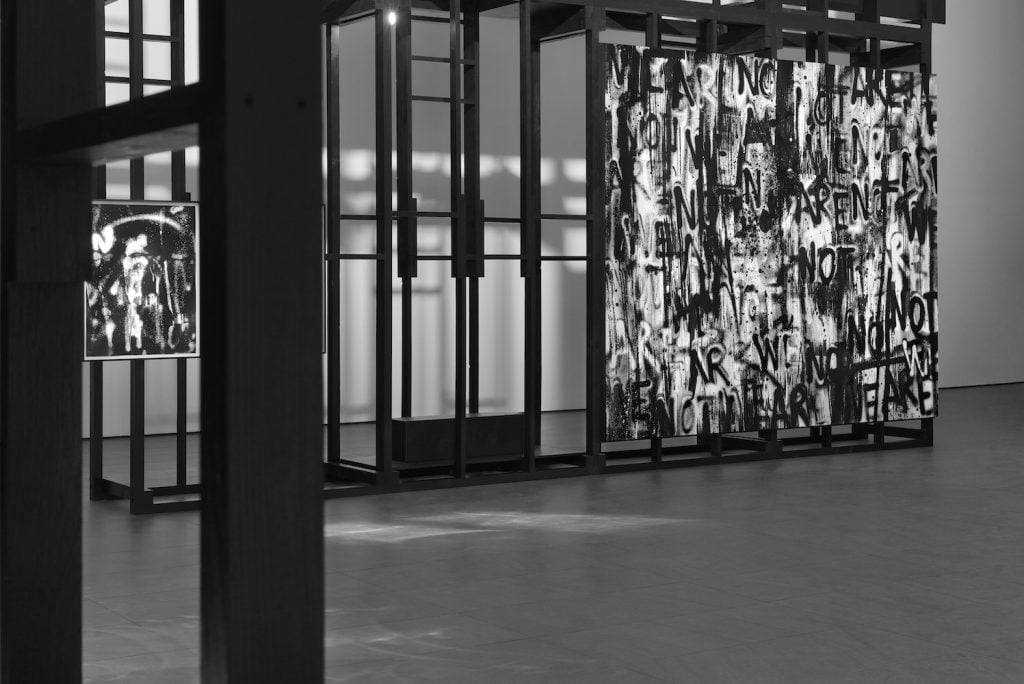
Installation view of “Adam Pendleton: Who Is Queen?” at the Museum of Modern Art, New York. Photo: Andy Romer.
Who’s to say that the same thing is not happening in museums, and that the artists being shown are not flashes in the pan? After all, MoMA is being more inclusive than ever, and presenting a fluid and ever-shifting definition of the canon. In its collection rehang, MoMA is keeping the Picassos, Matisses and Cézannes that are its mainstay. But it is also incorporating works by women and artists of color who were long excluded, and indicating that it will be constantly rehanging its permanent collection in a challenge to the very notion of permanence. As Temkin puts it, “We’re saying there is no fixity, there is no limit, we don’t want just one canon. The canon shifts every six months.”
What if the artists who get written into this new and rotating canon are no good? “I don’t worry about that at all,” replies Temkin. She notes that MoMA has always operated on two tracks: choosing works of the past that seem important “with historical 20/20 hindsight,” and works that are brand new and completely untested. She recalls that the museum’s second ever exhibition was dedicated to 19 living American artists, many of whom are unknown names today. It’s impossible to know in advance who will be great, she says. “You just have to forget about that barometer. Otherwise you’d be paralyzed.”
The Whitechapel’s chief curator, Lydia Yee, agrees. “Museums and galleries have to take risks, and not all of the art will stand the test of time,” she says. “Look back at issues of Artforum from past decades, and you’ll ask, ‘Who is this on the cover?’” Some artists will have a lasting career, and others won’t. That’s not necessarily a gauge of their talent, and can’t be “boiled down to that elusive factor of quality.”
That’s because canons are always being revisited, and artists’ importance is constantly being reassessed, notes Birnbaum. Cézanne “was different” after Picasso—he took on much greater significance—as was Marcel Duchamp after Warhol. “The only good definition of a meaningful canon is that the works are still of relevance to people in their lives,” Birnbaum explains. Art history is “rewritten and reinterpreted,” and it is “through these rereadings that the real canon will emerge.” Fair enough. But on occasion, the baby can get thrown out with the bath water. As Brenson points out, there is now “a real aversion to a lot of the art that we grew up caring about: pretty much the whole history of Modernism.” He cites the example of the American sculptor David Smith, whose biography he has just completed; people today have preconceptions about him, judge him as “a canonical male who made welded steel sculpture.” The same goes for Jackson Pollock, I might add. It is fashionable in the art world nowadays to describe him as an artist whose vast canvases were extensions of his masculinity and ego, and who completely crushed the career of his equally gifted wife, Lee Krasner. It’s true that Krasner was unquestionably overshadowed as a result of her marriage to Pollock. Yet Pollock’s paintings are no less epic.
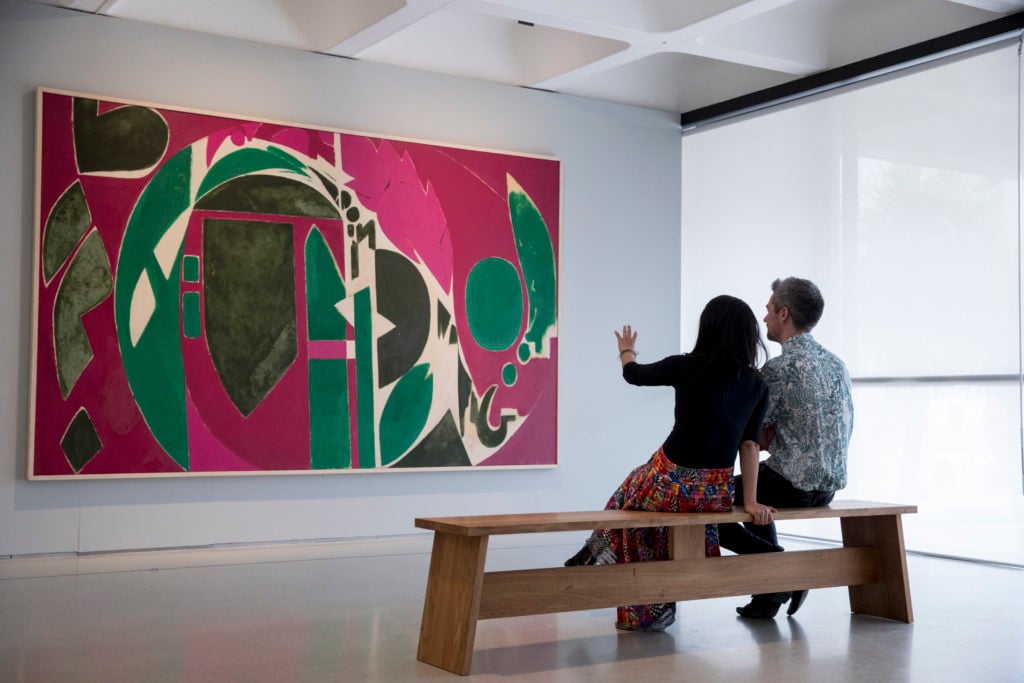
An exhibition of work by Lee Krasner. Photo by Tristan Fewings/Getty Images for Barbican Art Gallery.
These new stereotypes will “have to be undone, and will be undone,” Brenson predicts, “because the artists are simply too good.” A third consequence of this distorting age is that people, artworks, and exhibitions are being taken down on social media, for better or worse. White artists are being slated for portraying Black subjects, or for representing episodes of Native American pain. Their works are being threatened with destruction, or destroyed. Exhibitions containing one single controversial artwork are being shut down as soon as they open. Outdoor sculptures are being vandalized.
Inside museums and galleries, the daily behavior of those at the top is being denounced (albeit anonymously) on dedicated Instagram accounts citing offensive statements and behavior. People in senior positions are losing their jobs because of verbal slipups that then reverberate online. Such is the impact of these callout accounts that one recent post read: “My museum’s director has said one of their biggest fears right now is being featured on this page.” Many of the managers targeted by these feeds probably deserve to be called out. But what about those who don’t? It can feel like a witch hunt sometimes. I find it paradoxical that, a couple of decades into the 21st century, when people are able to express themselves freely every minute of the day, the world should still also be closed-minded and exclusionary. Round-the-clock digital democracy is empowering, but it can also be paralyzing.
In her book Dare to Speak, Suzanne Nossel—chief executive of PEN America—describes the quandary well. “Our callout culture, wherein offensive remarks, infelicitous phrasings, and misstatements can get someone lambasted online and even make their way into news coverage, is remaking the landscape for speech in ways both good and bad,” she writes.
On the plus side, we are held to account “by anyone who hears or reads our words.” On the minus side, there is a “toxic and censorious” consequence to this, because callouts can “metastasize, delivering a punishment vastly disproportionate to the underlying offense,” a punishment that gets further amplified by the fact that it is public and online.
In any event, the art world is indisputably in the throes of a radical and far-reaching transformation. The sands are still shifting, especially with the COVID-19 pandemic, and there is no telling what the landscape will look like in five or 10 years.
What remains beyond doubt is that the levers of power and influence are still firmly and predominantly in white and male hands. Take a look at the management of the West’s top museums. How many women or nonwhite directors do you see? Ditto when it comes to boards of trustees. A changing of the guard seems in order. How soon will it happen? “Whenever people ask me about what I think it would take to change the museum, my flippant but absolutely serious answer is, ‘I think some people have to die,’” quips the young art historian Alice Procter. “We won’t really see change until we have a new generation coming up.”
In the meantime, it’s all well and good to program exhibitions of art works by women and artists of color, but those artworks must then be acquired by the exhibiting institutions for change to become entrenched. “Everybody jumps because museums are doing a lot of shows, but how much of that goes into the collections?” asks Coco Fusco. To Fusco, it’s the equivalent, in the academic world, of asking: “Should I be happy that a lot of Black people are invited to give lectures, or should I look at how many get tenure?”
“When Black artists start selling for the same as those dead white men, and Black people start managing the institutions, and more Black people are on the boards of those museums, and more Black dealers are able to maintain their galleries open,” says Fusco, “then I may start believing this.”
Brenson agrees that this revolution will truly be complete only when museums become “a level playing field,” where “everything will be able to be considered,” irrespective of gender, nationality, race, age, sexual orientation, or political persuasion.
As the British artist Isaac Julien observes, “I think it would be great to come to a position when we don’t have to underline things.” For now, we’re still in a position of having to underline things—to emphasize and to accentuate them—lest we should revert to our bad old ways. The pendulum still has a way to go before reaching equilibrium point.